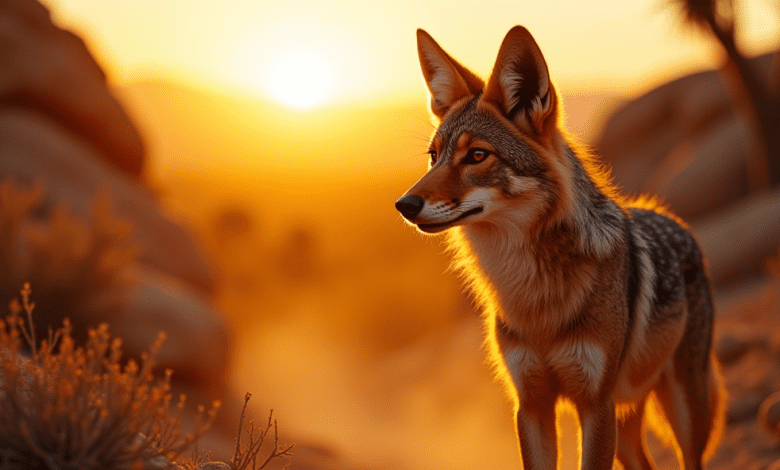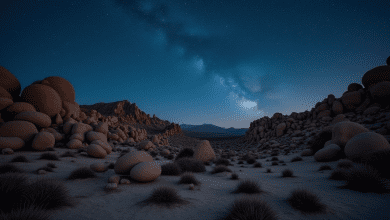Essential Guide: What to Do if You Encounter a Coyote in Joshua Tree National Park

What to Do If You Encounter a Coyote in Joshua Tree National Park
Coyote sightings in Joshua Tree National Park can be both thrilling and alarming for visitors. As one of the park’s native animals, understanding how to respond upon encountering a coyote is crucial for your safety and the well-being of these wild creatures. In this blog post, we’ll explore what steps to take if you encounter a coyote while exploring the stunning landscapes of Joshua Tree National Park.
Understanding Coyotes: A Brief Overview
Coyotes (Canis latrans) are adaptable and intelligent members of the canine family found throughout North America. In Joshua Tree National Park, they play a vital role in the ecosystem by helping control populations of small mammals. These animals typically avoid human contact, but with the increasing overlap of urban areas and natural habitats, encounters are becoming more common.
Key Characteristics of Coyotes:
– Size: Approximately 20 to 50 pounds, similar in size to a medium dog.
– Appearance: Sleek, with a bushy tail, large ears, and a pointed snout, typically tan or grayish-brown in color.
– Behavior: Generally shy and skittish, coyotes tend to avoid humans but may be seen scavenging or hunting small prey.
What to Do When You Encounter a Coyote
When you spot a coyote in Joshua Tree National Park, it’s essential to remain calm and respond appropriately. Here’s your guide on how to handle the situation:
1. Stay Calm
Your initial reaction may be to panic, but staying calm is vital. Coyotes can sense fear and anxiety, which may provoke a defensive or aggressive response. Take a deep breath, and remember that coyotes are typically curious rather than hostile.
2. Make Your Presence Known
If a coyote approaches you or seems overly curious, make yourself known. Yell, wave your arms, or make loud noises to assert your presence. A coyote’s natural instinct is to avoid conflict; by making yourself appear larger and more dominant, you may encourage the animal to retreat.
3. Do Not Run
Running can trigger a coyote’s chase instinct. Avoid turning your back or sprinting away. Stand your ground until the coyote has moved on or has lost interest.
4. Back Away Slowly
If the coyote does not seem aggressive and appears curious, begin to back away slowly. Maintain eye contact without staring them down, as this can be perceived as a challenge. The idea is to create space between yourself and the animal while remaining calm and assertive.
5. Keep Pets on Leashes
If you’re hiking with pets, especially small dogs or cats, keep them on a leash. Coyotes are opportunistic feeders and may see your pets as potential prey. Keeping them close will reduce the risks associated with coyote encounters.
Coyotes and Wildlife Safety
Understanding coyote behavior contributes to your overall safety while visiting Joshua Tree National Park. Beyond personal safety, it helps to preserve the natural balance of the ecosystem. Here are a few tips to minimize the chances of an encounter:
1. Avoid Feeding Wildlife
Never feed coyotes or other wildlife. Feeding can encourage them to associate humans with food, leading to increased encounters and potential conflicts. Store food securely and dispose of trash properly to avoid attracting wildlife.
2. Travel in Groups
Hiking with a group can deter coyotes and other wildlife. Coyotes are less likely to approach larger groups of people. Ensure everyone in your party is aware of how to react during an encounter.
3. Stay on Designated Trails
Sticking to marked trails reduces the chances of unexpected wildlife encounters. It also helps ensure that you are safely navigating the park’s natural landscapes.
Conclusion: Respecting Nature’s Instincts
While encountering a coyote in Joshua Tree National Park can be an unforgettable experience, it’s essential to know how to respond appropriately. By staying calm, making your presence known, and respecting their natural behaviors, you can ensure an enjoyable and safe visit without disrupting the lives of these fascinating creatures.
If you’re planning a trip to Joshua Tree National Park, embrace the opportunity to enjoy its diverse wildlife and stunning scenery. Remember: respect the animals that call this park home and follow best practices for wildlife encounters to make your outing both safe and memorable.
By following these simple guidelines, you can enjoy your adventure in Joshua Tree National Park while maintaining a safe distance from its wild residents. For more information about coyote behavior and safety tips, visit the official National Park Service website or check with the park rangers upon your arrival. Happy hiking!




